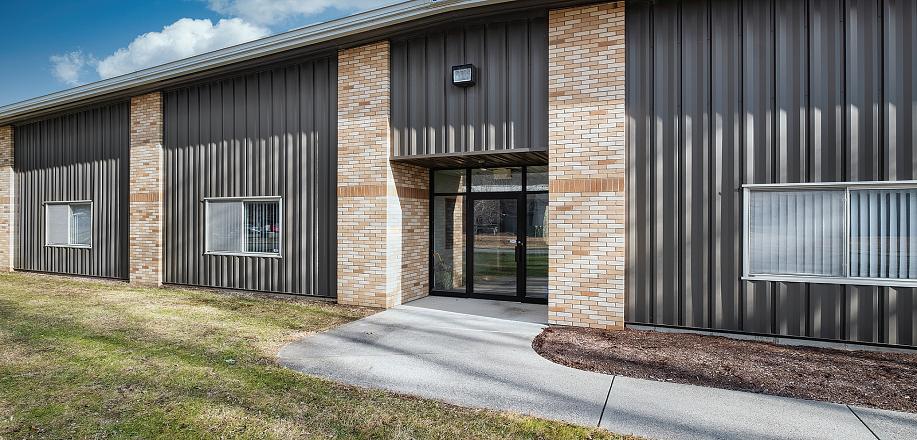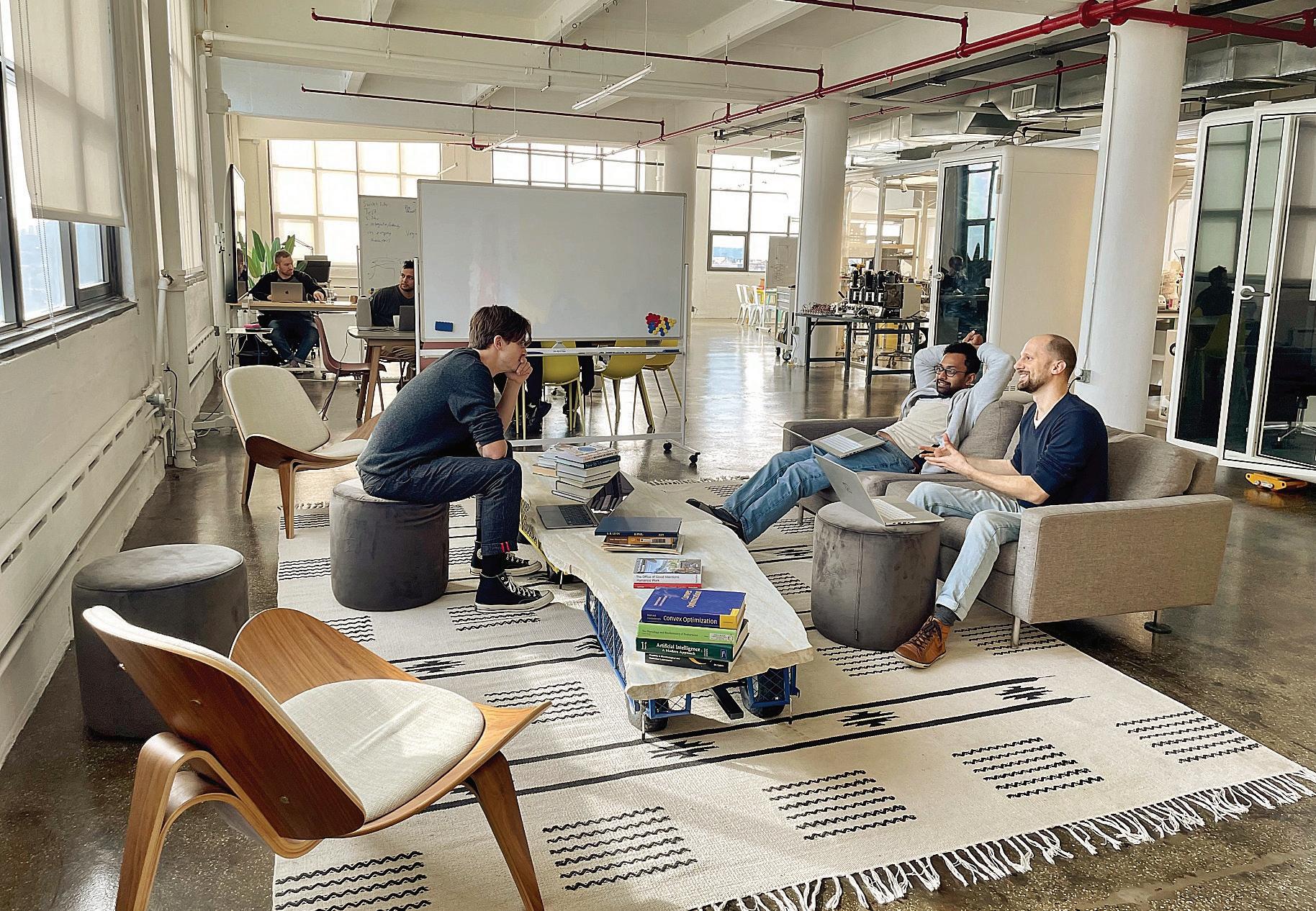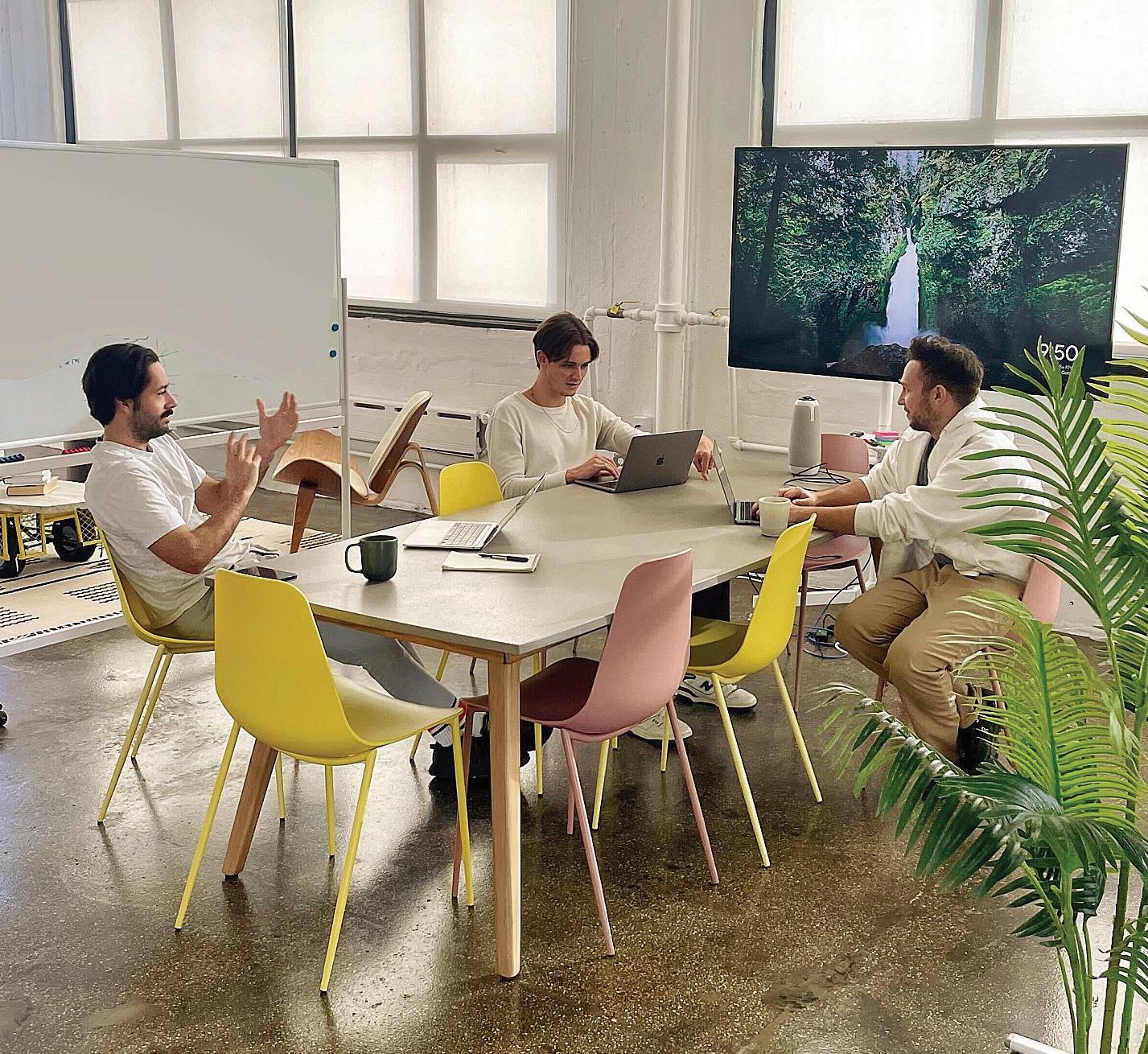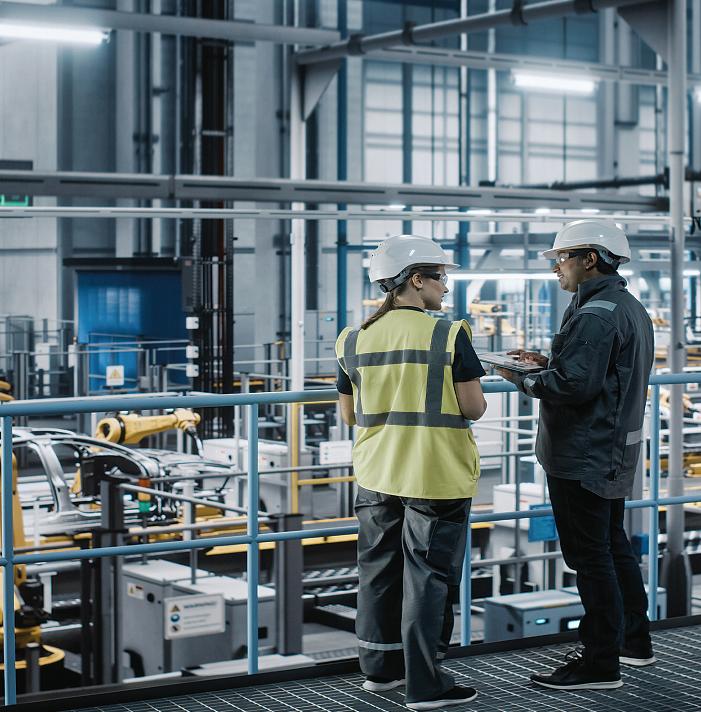
6 minute read
Cover story Growing
FROM PAGE 1
“Our vision is that the future will be biological with more products grown as cells,” said Levin, the company’s CEO, who holds a doctorate in evolutionary biology. “Many of our resources will be created through synthetic biology rather than by manufacturing as we currently think of it.”
Amdahl-Culleton is the head of engineering and design at Melonfrost, Harrigan serves as director of operations and White is operations and finance manager. The four men have been close since childhood.
Melonfrost is involved in the field of biosynthetics. While biological organisms are already the basis of the natural living world, biosynthetics aims to utilize them as alternatives to petrochemicals, plastics, minerals, and other materials and traditional industrial processes.
“Cells are powerful and efficient factories,” Levin said. “The goal is to harness these capabilities to create products and manage our resources in a more efficient, economical and environmentally sustainable way.”
Melonfrost is not the only company involved in this space. Biosynthetics is an established field of science and entrepreneurial pursuit. Products based on biosynthetics are already on the market, like textiles composed of synthesized plant-based fabric instead of polyesters or acrylics. Numerous systems and methodologies already exist, or are in development, to analyze and modify the genetics and characteristics of organisms to achieve specific qualities.
But, Levin and his partners believe they have developed a proprietary platform that will make the development of biosynthetic products significantly more achievable and economically practical. They say they can do this by reducing the time and steps required to optimize specific traits that will yield commercially viable organisms.
They compare the current state of biosynthetics to the time when startups like Google were pioneering the development of technologies and applications that brought computer science into everyday life and commerce and created today’s digital world.
Levin and his partners believe the platform that they have developed will allow Melonfrost to emulate the success of those early digital pioneers. “The world’s first evolutionary engine,” is how the platform is described on Melonfrost’s website, melonfrost.com.
They have combined the science of evolutionary biology with machine-learning/artificial intelligence software into a two-phase platform. It includes hardware that they refer to as the “evolution reactor,” and software that they’ve named Maia.
“The technology we’re building has the potential to become a fundamental part of the infrastructure of the bio-economy of the future,”’ Harrigan said.

The evolution reactor includes small containers, called wells, that hold populations of selected microorganisms in an enclosed environment. The reactor also has equipment that controls conditions within the wells that affect the organisms. “It’s like a very small, super-advanced greenhouse for microbes,” Levin said.
These are connected to the Maia software, which manages the controls. It continuously monitors the organisms and their response to changes and makes adjustments. Maia learns how the organisms evolve in response to selection pressures. It guides the evolution reactor by applying new pressures to modify the organisms to create variations with the desired characteristics.
The process is similar to the genetic changes that occur during natural selection, or the deliberate cultivation of characteristics in traditional breeding methods of plants and animals, Levin said.
“The advantage of our system is that it accelerates this process,” he said. “It cuts the time required for changes to occur from many years to weeks.”
According to Levin, Melonfrost’s system is also more efficient and economical than current methods of genetic engineering where scientists conduct an experiment, obtain a result, and then have to start a new experiment to take the next step.
“Our system automatically does that instantaneously in real time,” he said.
The Maia software retains and stores the data it collects.
“Over time this will create a massive data set that can be used in the future to build other things,” said Levin.
The potential uses of biosynthetic technology are unlimited.
“It can create materials like new forms of concrete that are based on cells,” Levin said. “It opens up new opportunities for medicines, or biologically based fuels that are cleaner than petroleum. In addition, the technology can also be used at the other end, to dispose of waste on a more sustainable basis.”
“There’s a lot of work ahead to further develop and refine our platform and build the business,” Levin said.

The company’s founders have a long history together Levin, Harrigan and


Amdahl-Culleton were pre-school classmates before meeting White in middle school. Levin, Harrigan and White graduated from Monument in 2011, while Amdahl-Culleton graduated the following year.
In high school, they played on sports teams and participated in other activities together. A hint of their future endeavors occurred when Levin founded a student organization called “Project Sprout,” a school garden that supplied food to the high school’s cafeteria.
After graduating from Monument, the foursome went their separate ways, geographically at least. Levin moved to England to pursue his doctorate at Oxford University. Amdahl-Cullerton headed to California where he studied electromagnetical systems and rein- forcement learning algorithms at Stanford University. White also went west, earning a bachelor’s degree in English from the University of San Diego before traveling internationally and working in various other jobs.
Harriigan earned a bachelor’s degree from Syracuse University and then a master’s degree at the London School of Economics. He went on to manage industrial digital and physical infrastructure projects, which included the installation of regional telecommunications towers.
“We were scattered all over the world, but we stayed in touch, and would gather in the Berkshires when we came home for breaks,” Levin said.
The basic concept for Melonfrost began in 2016, when Levin, who had studied how to use machine learning to predict how organisms evolved, and Amdahl-Culleton began to informally discuss the possibility of combin- ing their areas of interest on a project. They were initially interested in doing theoretical academic research instead of starting a business. But as they discussed their plans the two men came to believe that their concepts could be useful in commercial applications.
“The more we talked the more confident we became that these ideas which were largely academic could be practically quite valuable,” Amdahl-Culleton said.
Harrigan and White had also become interested in this concept, but from different perspectives. In 2018 the four men all decided to pursue this concept as a business. Knowing each other’s strengths and weaknesses proved to be valuable in starting the company.
“We are lucky because our interests and skills complement each other,” Levin said. “Loren and I are oriented to the scientific side, while Luc and Sean bring skills and knowledge in business development, management, operations and finance.”
The four men returned to the Berkshires in 2019 to live with their parents while developing a business plan and navigating their way through the complex process of seeking startup capital.
“We had a plan and the beginnings of an amazing technology but no resources to start a business,” Levin said. “We spent a lot of time on Zoom with potential investors in California because we couldn’t afford to go out there. We’d also get up early and drive to New York or Boston, spend the days in meetings there, and drive home exhausted.”
Those efforts paid off. By the beginning of 2020 the four childhood friends had raised $800,000 in “pre-seed” capital in a package organized by Third Kind Venture Capital that included other investors. Pre-seed funding used to describe a venture’s earliest stage of funding, because it precedes seed funding, which startups use to get underway. At this stage, investors often provide startups with capital to develop their products in exchange for equity in the business.

For Melonfrost, the pre-seed funding allowed the company to advance to the proof-of-concept stage, allowing them to demonstrate that their platform was scientifically viable and commercially feasible. The four men moved to New York, set up an office and lab in Brooklyn, and began conducting tests, while they sought their next round of funding.

“We chose to base it in New York because we were doing cutting-edge work and needed to be able to recruit scientists and engineers with specialized expertise,” Levin said. “It’s also the center of finance.”

The $7 million round of seed funding that Melonfrost just received is led by Refactor Capital and Alexandria Venture Investments. Third Kind Venture Capital, AME Cloud, Not Boring Capital, and Jeff Dean, the head of Google Brain, are other investors.
The new finding allows the four men to scale up Melonfrost’s facilities, operations and staff, which currently number 13.

“Our goal is to double that over the next year,” Harrigan said.

The company’s new commercial customer will provide Melonfrost with an opportunity to apply its platform to a specific purpose. The identity of the customer is confidential, but Levin said it is a food technology company that is exploring the creation of animal-free fat.
Whatever the future holds for Melonfrost, the four founders say they will remain closely connected to the Berkshires.
“New York is the logical business home of the company, but its seeds are in Berkshire County, going all the way back to Project Sprout,” Levin said. “On a personal level we still think of the Berkshires as home, and we go back as often as we can.”






